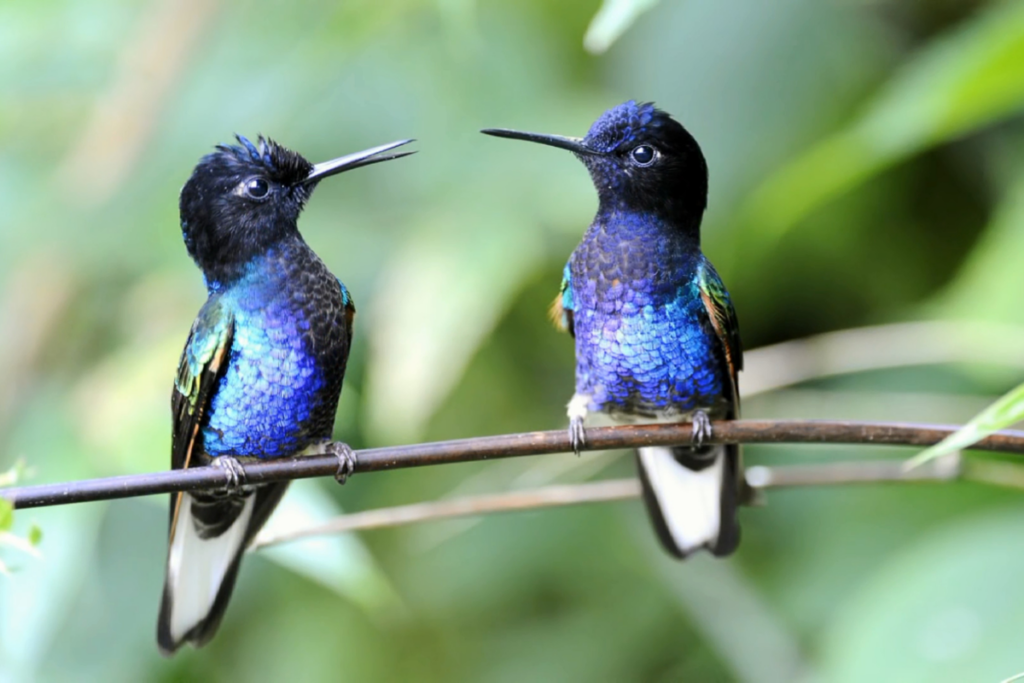Hummingbirds, known for their astonishing beauty, agility, and resilience, have captivated the imagination of many cultures across the Americas.
For countless indigenous communities, these tiny yet vibrant creatures hold profound spiritual, cultural, and ecological significance.
This article delves into the multifaceted roles that hummingbirds play in the traditions, mythology, and daily lives of indigenous peoples, exploring their symbolic meanings, their place in mythology, and their influence on cultural practices and artistic expressions.
Symbolism and Spiritual Significance

Hummingbirds are often seen as symbols of various positive attributes, such as joy, beauty, agility, and tenacity.
Many indigenous cultures view these birds as messengers between the earthly and the spiritual realms.
Their swift and graceful flight, combined with their ability to hover in place, gives them an ethereal quality, often associated with the movement between worlds.
In many Native American traditions, hummingbirds are seen as symbols of love and happiness.
For example, among the Hopi people of the southwestern United States, hummingbirds are believed to bring good weather and play a role in bringing rain, which is vital for their agricultural practices.
The Hopi katsina, a spirit being in their religion, includes a hummingbird figure that is celebrated in ceremonies.
The Aztec civilization, one of the most prominent indigenous cultures of Mesoamerica, held the hummingbird in particularly high esteem.
The Aztec god Huitzilopochtli, the deity of war and the sun, is often depicted as a hummingbird or with hummingbird feathers.
According to Aztec mythology, Huitzilopochtli was born as a fully armed hummingbird, leading his people to victory and prosperity.
The hummingbird feathers were considered precious and were used to adorn the attire of warriors and nobility, signifying their power and divinity.
Mythology and Folklore

Hummingbirds feature prominently in the mythology and folklore of various indigenous cultures, often embodying themes of transformation, resilience, and connection to the divine.
In the Andes, among the Quechua and Aymara people, hummingbirds are associated with resurrection and transformation.
The Inca, who regarded the hummingbird as a symbol of resurrection, believed that these birds were manifestations of their ancestors’ spirits.
This belief was reinforced by the bird’s remarkable ability to go into a torpor state, which could be seen as a form of temporary death followed by revival.
In North America, the Cherokee people have a legend that tells the story of a hummingbird’s journey to retrieve tobacco, which was stolen by an evil spirit.
The hummingbird’s persistence and speed in overcoming obstacles to retrieve the tobacco highlight its role as a bringer of good and a symbol of perseverance and determination.
Another fascinating tale comes from the Taino people of the Caribbean, who believe that hummingbirds are the spirits of their ancestors and embody the soul of the deceased.
They consider the bird’s vibrant colors and swift movements as the expression of their ancestors’ joy and freedom in the afterlife.
This belief underscores the deep spiritual connection and reverence they hold for these tiny creatures.
Cultural Practices and Artistic Expressions

The significance of hummingbirds in indigenous cultures is not limited to mythology and symbolism.
These birds also play a vital role in various cultural practices and artistic expressions, ranging from ceremonial uses to intricate artwork.
Ceremonial Uses
In many indigenous cultures, hummingbird feathers are used in ceremonial attire and rituals.
The feathers, due to their iridescent quality, are considered magical and are believed to carry the blessings of the gods.
For instance, the Navajo people use hummingbird feathers in their healing rituals, believing that the bird’s ability to hover and dart around symbolizes the healer’s ability to move between the physical and spiritual worlds to bring about health and well-being.
The Huichol people of Mexico use the image of the hummingbird in their ceremonial art and crafts, often creating colorful yarn paintings and beadwork that depict these birds.
The hummingbird, in Huichol tradition, is seen as a messenger of the gods, carrying prayers and thoughts to the spiritual world.
This connection is celebrated during their annual pilgrimage to the sacred land of Wirikuta, where they offer gifts and perform rituals to ensure the harmony and balance of the universe.
Art and Craft
The vibrant colors and intricate patterns of hummingbirds have inspired numerous forms of indigenous art.
From pottery and textiles to jewelry and painting, these birds are a recurring motif that showcases the creativity and craftsmanship of indigenous artists.
The Moche civilization of ancient Peru, renowned for their pottery, often depicted hummingbirds in their ceramics.
These depictions were not just artistic but also carried religious and cultural significance, illustrating the bird’s role in their cosmology and daily life.
In the Southwest United States, Pueblo artisans incorporate hummingbird designs into their pottery and woven textiles.
These designs are not merely decorative but serve as a means of storytelling, conveying cultural narratives and beliefs through visual symbolism.
Storytelling and Oral Tradition
Hummingbirds also play a pivotal role in the oral traditions of many indigenous cultures.
Storytelling, an essential aspect of cultural transmission, often features these birds as central characters, embodying virtues and moral lessons.
Among the Maya of Central America, hummingbird stories are woven into their rich tapestry of myths and legends.
One such tale is that of the sun god, Kinich Ahau, who transforms into a hummingbird to court the moon goddess.
This story, like many others, illustrates the bird’s role as a symbol of love and the divine interplay between celestial beings.
In the Amazon basin, indigenous tribes like the Tukano and Yanomami tell stories of hummingbirds as creators and protectors of the forest.
These narratives emphasize the bird’s ecological importance and its role in maintaining the balance of nature, highlighting the deep connection between culture and environment.
Ecological Significance and Conservation
Beyond their cultural and spiritual significance, hummingbirds play a crucial role in the ecosystems where indigenous peoples live.
They are vital pollinators, contributing to the health and diversity of plant life.
Many indigenous communities recognize and honor this ecological role, understanding the interconnectedness of all life forms.
In the cloud forests of the Andes, for example, the Kogi people see the hummingbird as a guardian of the environment.
They believe that the bird’s presence ensures the health of the forest, which in turn supports their way of life.
This belief underscores the importance of conservation and sustainable practices, which are deeply ingrained in their culture.
However, hummingbirds face numerous threats, including habitat loss, climate change, and human activities.
Indigenous knowledge and conservation practices offer valuable insights into protecting these birds and their habitats.
Many indigenous communities are at the forefront of conservation efforts, combining traditional ecological knowledge with modern science to ensure the survival of hummingbirds and the ecosystems they inhabit.
Conclusion
Hummingbirds are more than just beautiful creatures; they are integral to the cultural, spiritual, and ecological fabric of many indigenous communities across the Americas.
Their roles as symbols of joy, messengers of the divine, and vital pollinators highlight the profound connection between nature and culture.
Understanding and respecting this relationship is crucial for appreciating the rich heritage of indigenous peoples and the natural world they cherish and protect.
The enduring presence of hummingbirds in indigenous mythology, art, and daily life serves as a testament to their significance and the wisdom of these ancient cultures.
By learning from and supporting indigenous conservation efforts, we can help ensure that these remarkable birds continue to thrive, enriching our world with their beauty and reminding us of the intricate web of life to which we all belong.







